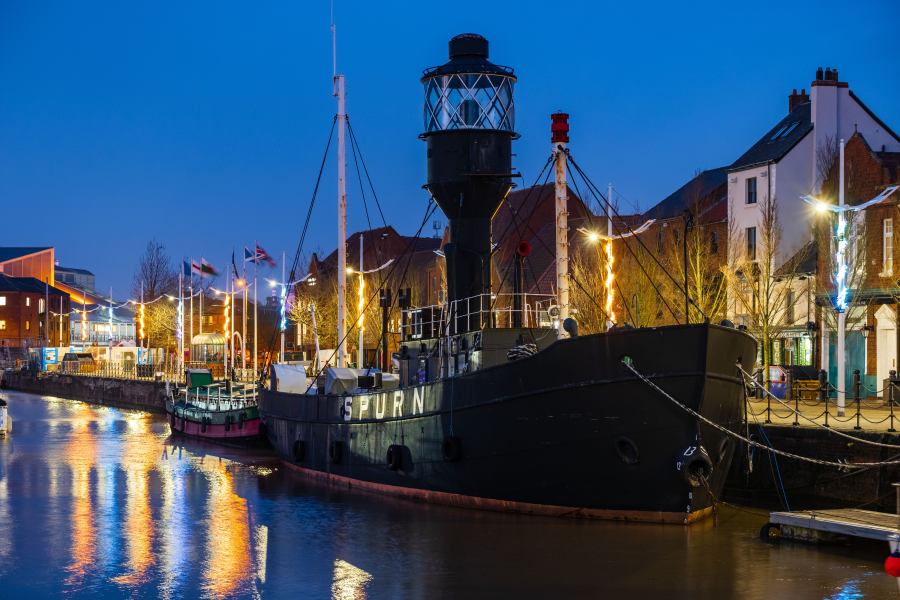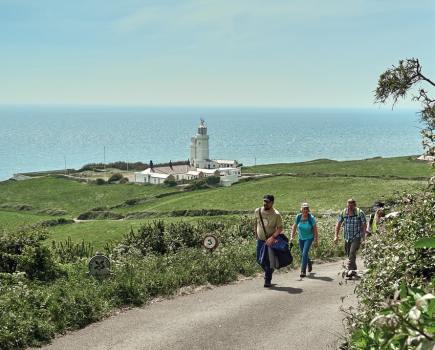SU CARROLL rounds up the very best activities and and things to do in April.
1. Sea food special

There cannot be a better setting for a food festival than the beautiful Cornish harbour of Porthleven. The not-for-profit community event is free to attend and attracts around 35,000 visitors for the best of local food, fringe events and family fun.
Local chef Jude Kereama (pictured) of Kota restaurant came up with the idea and is one of the driving forces behind it. He will be in the demonstration kitchen in a line-up with some familiar names.
Michelin star chef Tom Brown started his career as a pot washer at his local pub in Cornwall before going on to work with Rick Stein; Adam Handling’s Ugly Butterfly at Carbis Bay has a zero waste policy and he was crowned Champion of Champions on last year’s Great British Menu, Cornish-born Chris Eden is now head chef at prestigious Gidleigh Park and Elly Wentworth of The Angel in Dartmouth was runner-up in 2016’s Professional MasterChef.
There will be food stalls, plenty of local produce and family entertainment including circus shows and workshops, masterclasses, crafts, rides and parades. The event has won top prize for Best Event and Festival in the last two Cornwall Tourism Awards. April 26-28. porthlevenfoodfestival.com
LOCALS LOVE
As well as being a great destination for foodies, Porthleven has a fantastic arts offering with lots of galleries supporting local painters, sculptors, potters and other creatives. There’s a Community Interest Company, Porthleven Arts, which supports artists, innovators and creatives and aims to increase inclusive cultural opportunities for people in Cornwall. They are behind an annual autumn arts festival. The website has a useful directory of places to visit and work to see in and around Porthleven: porthlevenarts.com.
2. Petal power
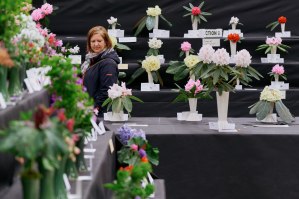
The Cornwall Garden Society’s Spring Flower Show was described by The Telegraph as the ‘Chelsea of the West’ and it’s easy to see why. This year’s new features include an immersive show garden, a grow your own space and Tipi Talks by local luminaries and national names.
The old favourites are back with dazzling displays and exquisite exhibits which led to Gardens Illustrated describing it as ‘one of the best flower and garden shows’. Competing classes are open to seasoned experts and beginners and range from ornamental shrubs and trees to daffodils and floral art.
The Cornish climate helps create spectacular displays early in the year. Specialist nurseries and garden traders will offer much to tempt enthusiastic amateur gardeners and seasoned horticulturists alike. An artisan area at the Royal Cornwall Showground near Wadebridge will showcase contemporary Cornish crafts and delicious street food will sustain showgoers. April 6-7. cornwallgardensociety.org.uk
LOCALS LOVE
There’s been a settlement in north Cornwall which straddles the River Camel since the 14th century. Local people would wade across when the tide was right – praying for a safe passage at a chapel on one side of the river and giving thanks at a chapel when they reached the other bank. When a 200-metres long stone bridge was built in 1478, it gave the town its name – Wadebridge. In March 1646 Oliver Cromwell, recognising its strategic position, sent 1,500 soldiers to take the bridge but Royalists withdrew without a fight. It is a Scheduled Ancient Monument. visitwadebridge.co.uk
3. Shining light
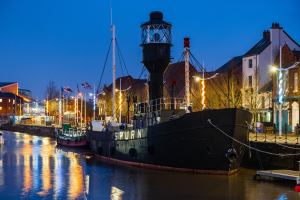
Ambitious projects to celebrate Hull’s 800 years of seafaring history will re-open to the public this year. Hull’s historic Spurn Lightship has now returned to the city’s waterfront following a 14-month restoration. Later this year the Arctic Corsair trawler’s transformation into a new £3.8m ‘eco-friendly’ visitor attraction will be revealed.
Built in 1927, the Spurn Lightship guided vessels as they navigated the Humber estuary, one of the world’s most treacherous waterways. A Hull landmark since opening as a museum in 1986, it moved for the first time in 35 years for refurbishment in 2018.
It is be the first of a host of visitor attractions to open as part of Hull Maritime, a £30.3m, five-year project, funded by Hull City Council and The National Lottery Heritage Fund, to transform the city’s maritime treasures and celebrate 800 years of seafaring history. Among other new-look attractions will be Hull’s popular Maritime Museum, which closed its doors in 2019 for a £12m refurbishment, and is due to re-open in early 2025. maritimehull.co.uk
LOCALS LOVE
The popular Hull Minster Beer Festival is held every April in the city’s historic 700-year-old Minster to champion local breweries, local music, local food and local people. There are five sessions over three days (April 25-27) and the £6 tickets include a souvenir glass and a beer guide. hullminster.org/beerfestival
4. Scilly season
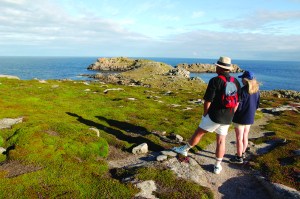
April marks the opening of the tourist season with the first big event of the year. Walk Scilly is an annual favourite for all who love the outdoors side of Scilly life. Covering the five inhabited islands, as well as some of the uninhabited too, the outdoorsy event has a little something for everyone and all abilities.
Enjoy ten days exploring the Isles of Scilly guided by local experts, discovering rich history and archaeology, or take a sea safari to see Scilly’s spectacular wildlife. Last year’s events included the annual sell-out Scilly Seabird and Seals, a look at the historic significance of the islands’ Bronze and Iron Age places and tours of Tresco Abbey Garden. The finale of the week is the much-loved Low-Tide event on the exposed sand bar between Tresco and Bryher. April 12-21. visitislesofscilly.com
LOCALS LOVE
The Isles of Scilly is rich with wildlife and last year Scilly Pelagics, which take visitors out to sea on the MV Sapphire, recorded the best year for rare wildlife sightings in the 23 years they’ve been operating.
The isles are famed for seabirds in particular and host a few pairs of nesting kittiwakes, hundreds of auks including the charismatic puffin, and have recently seen the return of nesting Manx shearwaters, following the success of the Seabird Recovery Project. Last summer they spotted Wilson’s storm petrels, sooty shearwaters, Arctic skuas and incredibly a South Polar skua. A rare red-footed booby made national headlines. Scilly Pelagics run trips from June to September. scillypelagics.com
5. Hidden gems
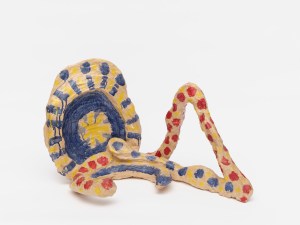
A new exhibition at the Royal West of England Academy in Bristol reveals an extremely rare and largely unknown aspect of the late artist John Hoyland’s career – ceramic sculptures.
In 1994 the prominent British abstract painter made an unruly group of 25 ceramic sculptures. Loaded with colour, humour and zoomorphic qualities, he called them ‘these mad little hybrids’, referring to their unexpectedness and the difficulty of fitting them into conventional categories. Remarkably, they have never been publicly displayed since being made.
Eleven of them are at the centre of These Mad Hybrids which will reflect on the importance of sculptural ideas in John Hoyland’s abstract paintings. On show will also be small sketchbooks full of casual, bold and intimate drawings in highlighter pen, and the first display of his polaroid photographs – which were an important tool in his practice as they enabled him to move his imagery between two and three dimensions. The exhibition also includes sculpture by Caroline Achaintre, Eric Bainbridge, Phyllida Barlow, Andrew Sabin and others. Ends May 12. rwa.org.uk
LOCALS LOVE
Bristol has a rich maritime history that is explored at M Shed on Bristol waterfront. The exhibits include remnants of the dock’s working life on Princes Wharf where the museum is situated. Four massive cargo cranes hark back to the city’s 1950s trading heyday when they were used to load and unload ships quickly. They were bought when the docks closed to commercial traffic in 1975 and restoration work, which began in 2001, means the Grade II listed cranes can move under their own power again. bristolmuseum.org.uk
6. Road trip

The National Waterfront Museum in Swansea tells the story of industry and innovation over the past 300 years in Wales. The museum is housed in an original listed warehouse linked to an ultra-modern slate and glass building.
Here you can discover the transport, materials and networks that were so important and the ‘big things’ that contributed so much to the industrial history of the nation. The museum is packed with transport exhibits from the introduction of rail travel with Richard Trevithick’s steam locomotive which began its journey in Wales in 1804 through the extensive use of coal wagons and other modern developments.
You can find out how Welsh companies and universities are developing cleaner, greener ways of travel and what we can do to help reduce climate change for future generations.
An exhibition, Great Welsh Road Trip, looks at the social impact of travel and how roads have played a vital part in Wales. Uncover the story of how road travel has evolved and changed over the years and the impact that has had on the communities and landscape. Free entry. Ends May 11. museum.wales/swansea
LOCALS LOVE
Dylan Thomas was born in Swansea and you can visit the modest house where he spent the first 23 years of his life and wrote two-thirds of his work. This living museum takes you back to the Edwardian era, when the Thomas family first moved in. The lovingly restored home was opened by Dylan’s daughter Aeronwy Ellis on the 94th anniversary of the poet’s birth in 2008. The house at 5 Cwmdonkin Drive is open for private tours, overnight stays and dining experiences. dylanthomasbirthplace.com
7. Inspired by the coast

St Ives painter Emma Jeffryes considers our relationship with the sea, and how this in turn has affected the nature of our coastline. Inspired by the spectacular area around her Cornish home, Emma’s paintings express the beauty and vitality of the west Cornwall coast.
In her work, spring flowers, bright umbrellas and dazzling waters are framed against the simple shapes of sky, sea and sand. Her talent with colour and the lively characterisation of people and places have made her work among the most recognised and best loved in Cornwall. Works include views of St Ives, of swimmers, fishing boats and sailing yachts, against the backdrop of Cornwall’s pure white sand and dazzling blue waters.
“Where sea meets land is a continual source of fascination and delightful subject matter to me,” says Emma. “I like to spend much of my time out absorbing the splendour that life and nature here has in abundance – wandering the beaches, visiting my favourite viewpoints, walking the coast path, cycling the Cornish lanes and swimming in the sea.”
Emma moved to Cornwall in 1997. The New Craftsman Gallery, in Fore Street, St Ives, which was founded in the mid-1960s by the potter Janet Leach has exhibited Emma’s work over the last two decades with successful annual solo shows for the last eight years. Her latest exhibition, By The Sea, ends on April 26. newcraftsmanstives.com
LOCALS LOVE
Janet Leach, who founded the New Craftsman Gallery, was married to renowned St Ives potter Bernard Leach. His legacy lives on at the pottery that bears him name on The Stennack on the outskirts of St Ives. The pottery was founded in 1920 and was originally an old cowshed and tin ore store. The site was renovated and reopened in 2008 as a working studio pottery, museum and gallery. Today you can take courses there and they often have children’s workshops during the holidays. Shopping for pottery is a must! leachpottery.com
8. Turning heads

The National Gallery of Ireland in Dublin is staging an entire exhibition dedicated to ‘the tronie’ – an old Dutch word for ‘face’ that represented experimenting creatively with facial expressions and in particular heads – featuring some of the most iconic examples of the genre by Dutch and Flemish artists, including Peter Paul Rubens, Rembrandt and Johannes Vermeer.
Turning Heads: Rubens, Rembrandt and Vermeer has over 70 works by artists of the 16th and 17th centuries when the Dutch Golden Age and Flemish Baroque painters were fascinated by creating intriguing and innovative character studies rather than portraits. At the forefront of the exhibition will be one of Vermeer’s most exquisitely detailed tronies, Girl with the Red Hat, which has rarely been seen outside the United States in the last century.
Another Dutch master is Rembrandt’s The Laughing Man (1629-1630), depicting a man baring crooked teeth as he laughs – an expression which was common for a tronie. This work also shows the beginning of Rembrandt’s loose brushwork that would come to define much of his later output.
The exhibition is a collaboration between the Royal Museum of Fine Arts Antwerp and the National Gallery of Ireland. Ends May 26. nationalgallery.ie
LOCALS LOVE
Of course leprechauns are real. Why else would they have a National Leprechaun Museum in Dublin? This fun museum explores folklore and mythology, bringing to life the long history of leprechauns, faeries and other Irish legends. Exhibits include the history of the leprechaun from the first sighting in the eighth century to Walt Disney’s visit to Ireland, where he found the inspiration for his 1959 film, Darby O’Gill and the Little People. There are rooms full of over-sized furniture and other optical illusions, as well as an exhibit that features rainbows and pots of gold. There is storytelling and an after hours exploration (for grown-ups) of The Dark Lands. leprechaunmuseum.ie
9. Solo debut
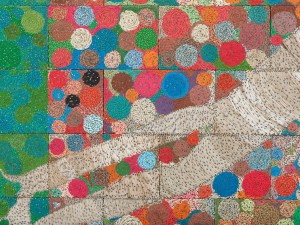
The Ethiopian multi-disciplinary artist Sime comes to the UK with his first major solo show in Europe, which is at Hastings Contemporary until September. A leading contemporary artist in his home country, Sime´s work has been shown around the world, and he is the recipient of the African Art Award from the Smithsonian National Museum of African Art.
The exhibition looks at the last decade of Sime´s career with over 25 works from large-scale abstraction works to ceramic installations and sculptural assemblages. It includes his Venice Biennale commission – a monumental work titled Veiled Whispers (2022) – solely made from modern materials such as electrical wires and microchips.
The relief is inspired by ancient symbols and traditional sculpting techniques from Ethiopia. The exhibition will also have key works from his ongoing landmark series Tightrope (2009-present, pictured) which uses figurative and abstract modes of modern Ethiopian art to explore the impact of technology on the environment. Waste items sourced from open markets in Addis Ababa are elaborately sewn to surfaces that transform and repurpose these materials into abstract topographies.
Elias Sime: Eregata is a touring show from Bristol´s Arnolfini where it opened in 2023. Ends September 8. hastingscontemporary.org
LOCALS LOVE
May Day holds a significance in traditional celebrations as it’s seen as the beginning of summer and is surrounded by all manner of celebrations and strange ceremonies. In Hastings they celebrate the Jack in the Green on the first Monday of May when Jack – with his cloak of leaves and a flower crown – leads a procession through the town of Morris dancers, monsters, spirits, and samba bands as they weave through the cobbled streets. As the Jack reaches the West Hill overlooking the town, he is ceremoniously slain and the spirit of summer is released from within.
The traditions declined in the Victorian era but were revived in Hastings in 1983. hastingstraditionaljackinthegreen.co.uk
10. The write place
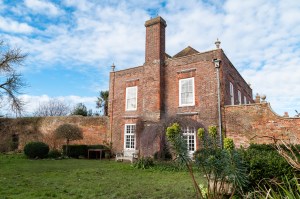
Lamb House in Rye, East Sussex, is a beautiful Grade II* listed Georgian property with strong literary connections. The author Henry James lived here and it was in his garden shed that he penned such classics as The Wings of a Dove, Washington Square, The Aspern Papers and The Turn of the Screw.
Later occupants included author EF Benson who created the Mapp and Lucia novels and Rumer Godden who wrote The Black Narcissus. The walled gardens are one of the largest in the centre of the old town in Rye. The grounds were designed by a friend of Henry James, Alfred Parsons, with a vegetable garden, planted beds and borders full of seasonal and perennial flowers. Check website for opening times: nationaltrust.org.uk
LOCALS LOVE
Rye was once a small fishing community, until the sea retreated by some two miles. It has a fascinating history – it was part of Normandy in the 13th century until returned to the English Crown. Many historic buildings remain and there are cobbled streets, useful for imagining the lives of the 18th century smugglers who stored their contraband in old vaulted cellars networked by secret tunnels and passages. visit1066country.com
COMING SOON
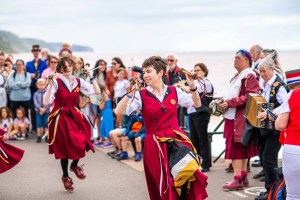
The Sidmouth Folk Festival is getting ready to celebrate its milestone 70th year with a classic top-class feast of captivating song, dance, music and merriment, plus some very special anniversary events to delight and unite everyone visiting or living in the picturesque Devon seaside town.
Folk lovers have been making an annual pilgrimage to Sidmouth since 1955, when the very first event dipped its toe in the water with a gathering for folk dance fans, featuring displays along the Esplanade.
Seven decades later, the much-loved annual summer festival has grown into a world-renowned week-long extravaganza that’s become part of the town’s DNA, as well as a faithful stalwart of the West Country festival calendar.
Among the 70 acts announced so far are: Karine Polwart, Oysterband, Kate Rusby, Ralph McTell, O’Hooley and Tidow, Steve Knightley and Friends, Sea Song Sessions, Spiers and Boden, Spooky Men’s Chorale, Chris Wood and Andy Cutting, plus pre-festival shows with Steeleye Span and the Ukulele Orchestra of Great Britain.
Sidmouth not only champions the very best of traditional and grass roots music and dance, it’s also proud to inject vibrant new energy year after year, embracing a myriad of folk-fuelled genres, as well as harnessing and nurturing the young, rising, cutting edge and culturally diverse. There’s a dedicated fun-packed children’s festival, Shooting Roots sessions for 12- to 17-year-olds, and a huge range of hands-on workshops.
Central to the 70th celebrations will be a traditional Street Party harking back to 1955 with picnic, music and dance. Contributions from the local community will be at the heart of The Story of Sidmouth show, reflecting the rich history of the seaside town in words and music. August 2-9. sidmouthfolkfestival.co.uk

